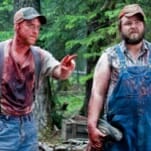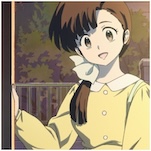Bulleit Bourbon Blenders’ Select No. 001
Photos via Diageo
For as big and recognizable a brand as Bulleit managed to become in the American bourbon world in the past decade, I’ve always been fascinated by how little drinkers (and even whiskey writers) really can say for sure about what’s going into each bottle. This is largely thanks to ownership—Diageo has owned the brand since the implosion of Seagram in 2000, but lacked their own major distillery in the U.S. to produce whiskey. This means that Bulleit has always been sourced, going all the way back to the company’s modern founding in 1987 … but it’s been sourced from several different distilleries in that time.
In its earliest incarnation, Bulleit bourbons were reportedly a product of Buffalo Trace’s Ancient Age distillery (DSP-KY-113). That continued until the late ‘90s acquisition of Bulleit by Seagram, which had for decades owned the Four Roses distillery in Lawrenceburg, KY. That new source of bourbon then persisted through the collapse of Seagram and the transfer to Diageo’s ownership, and for more than a decade, it was Four Roses juice inside every bottle of Bulleit. It was widely reported in 2013-2014, however, that the Bulleit brand was beginning to include distillates from other Kentucky bourbon producers, as the resurgence of the Four Roses brand meant they had less stock to supply. This is where things gets confusing, as for the last 7 years there have been indications that Four Roses stock is still involved with Bulleit, but also rumors of whiskey being sourced from countless other distillers such as Barton 1792, Brown-Forman and Jim Beam. Due to the non-disclosure agreements inherent to these sourced whiskey deals, it’s typically impossible to say which distillates may have ended up in a regular bottle of Bulleit’s flagship bourbon. The popular Bulleit rye whiskey, meanwhile, has always been sourced from MGP of Indiana.
At the same time, Bulleit has now been working for years to change all that by opening a distillery of their own in Shelbyville, KY. The first whiskey distilled at that location went into barrels in 2017, and the company expects its home-distilled bourbon to make its first (presumably limited) debut in 2022. A day may be coming, then, when all the whiskey (or bourbon, at least) labeled as “Bulleit” was actually produced in a single location with the name “Bulleit” above the door. But until that happens, there will always be questions about sourcing when it comes to new Bulleit releases.
Which brings us to THIS new Bulleit release, the first edition of the company’s new “Blenders’ Select” line. Blenders’ Select No. 001 is part of a wider initiative from the parent company, called the Diageo Craftswomen campaign, intended to shine a spotlight on the contributions of women in the spirits industry. That includes a new version of the “Jane Walker” scotch from Johnnie Walker, but in the U.S. it’s likely to be more associated with this Bulleit release, which was conceived and designed by Bulleit blender Eboni Major.
Blender’s Select No. 001 is perhaps best compared to Bulleit’s existing 10-year-old, age-stated expression, but there are some interesting distinctions made in the marketing copy for Blenders Select No. 001. It’s a 100 proof blend of bourbons “aged a minimum of 9 years,” and claims on one sell sheet I received to be made “by mingling three of the 10 distillates that are often part of the original Bulleit Bourbon blend.” The use of the word “often” there seems critical—an admission that the makeup of the regular Bulleit Bourbon blend does indeed change from time to time.
A tag on the neck of my Blender’s Select No. 001 sample, meanwhile, makes this one’s Four Roses sourcing much more clear: “Achieving award-winning results consistently from batch to batch requires Bulleit blenders Eboni Major and Andrew MacKay to be at the top of their craft. To do this they mingle ten distillates that are the outcome of two high-rye mashbills, each distilled with five proprietary yeast strains and aged between six and eight years.” That would seem to run contrary to the “minimum of 9 years” mentioned on the other sell sheet, but the description at least makes it clear to the whiskey geeks in the house that this must be Four Roses stock.
-

-

-

-

-

-

-

-

-

-

-

-

-

-

-

-

-

-

-

-

-

-

-

-

-

-

-

-

-

-

-

-

-

-

-

-

-

-

-

-








































